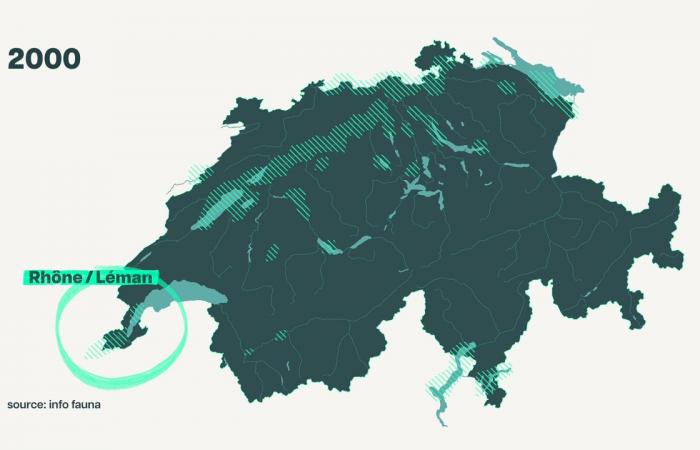It swallows up everything in its path. But is catfish as dangerous as people say? Will he devour us? The web series Bêtes noire took a dive into the Rhône for a life-size test.
He has everything to be scary with his big head, his huge mouth and… around 1500 teeth. With its flabby, scaleless body, it looks as much like a snake as it does a fish. But swimming enthusiasts can be immediately reassured: catfish do not attack human beings. Well, almost never.
I said to myself: save your skin and go back to the edge!
“Suddenly, I felt a lot of pressure in my stomach which hurt me very, very badly. I said to myself: save your skin and go back to the edge,” says Alexandra, the latest victim. a catfish bite at Domaine des Îles, in Sion, in 2011.
Once on the bank, more fear than harm for the Valais swimmer: “He still left with a piece of my bikini. I wasn’t really bleeding, it was mostly very irritated and painful.”
Protect the nest
Note that the – very rare – other incidents declared elsewhere in Europe have seasonality in common. Each time, the mishap happened between May and July, during the breeding period, when the adults protect their nests from any intruders.
![Not very shy, the catfish allowed itself to be approached... within 30 centimeters by our journalist. [RTS] Not very shy, the catfish allowed itself to be approached... within 30 centimeters by our journalist. [RTS]](https://euro.dayfr.com/content/uploads/2024/06/15/ad95800578.jpg)
Fish, rats, pigeons…
If catfish don’t eat humans, they feed on (almost) everything else: crayfish, fish, zebra mussels, plants, ducks, snakes, rats and even… pigeons. Including its smaller congeners, since the catfish is cannibalistic: “It therefore contributes to a sort of self-regulation of the species, because it has no predators once adult”, explains Chloé Vagnon, a biologist who has dedicated a thesis on animals. Before specifying: “There are plenty of studies which show that catfish has no impact, in the long term, on other species”.
![Very opportunistic, the catfish attacks a wide variety of prey. [RTS] Very opportunistic, the catfish attacks a wide variety of prey. [RTS]](https://euro.dayfr.com/content/uploads/2024/06/15/ad87dc3b27.jpg)
Reintroduced by humans
In Switzerland, we should come across more and more catfish in the future, particularly in Lake Geneva, where it is growing rapidly. A little-known fact is that the species was already present in Switzerland before the last glaciations, but this period made them disappear. Then, the catfish were gradually reintroduced by humans. First at the end of the 19th century, in Lake Constance and in the Three Lakes region. And only about twenty years ago, in Lake Geneva and the Rhône.
![Distribution of catfish in Switzerland. [RTS] Distribution of catfish in Switzerland. [RTS]](https://euro.dayfr.com/content/uploads/2024/06/15/76c8dd69f0.jpg)
Three reasons explain its proliferation in Swiss waters: the absence of predators once adult, climate change and clandestine releases by certain people practicing fishing, fans of sporting challenges or large trophies.
>> The previous episode of Black Beasts: Why do we hate spiders?
Simon Gabioud & Michael Lapaire / sjaq










